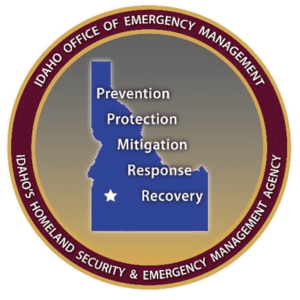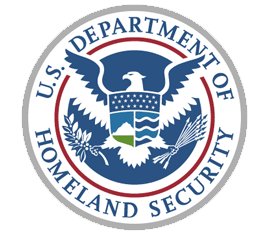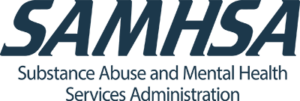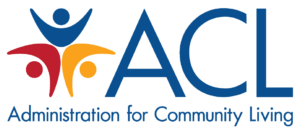Federal. State. Local. Tribal.
We provide solutions to government agencies to improve their preparedness and response capabilities for potential challenges and unexpected events.
Our solutions aim to promote stability and security by delivering training, exercises, plans, and policies to ensure the agencies' continued operations.
This helps the agencies to be better equipped to handle and respond to incidents, minimize their impact, and restore normal operations as quickly as possible.
Training
Helps government agencies be better prepared for and respond to various types of emergencies such as natural disasters, health pandemics, or other hazardous situations. Training aims to provide agencies with knowledge and skills to help protect themselves and others during an emergency and to facilitate a more efficient and effective response.
There are several types of training, including:
Read More
- On-the-Job Training (OJT): This involves learning by performing tasks under the guidance of an experienced worker or supervisor.
- Classroom Training: This involves formal instruction in a classroom setting, often with a teacher or trainer.
- eLearning: This involves online training, which can be self-paced or instructor-led, and may include multimedia elements such as videos, animations, and interactive quizzes.
- Simulation Training: This involves creating realistic scenarios in a controlled environment to provide hands-on experience and build skills.
Exercises
Increases preparedness and safety, tests contingency plans and emergency response procedures, develops team cohesion, improves communications and evaluating and refining skills. Exercises help ensure that agencies are familiar with emergency procedures and ready to respond in the event of an actual emergency.
Read More
To assist with interagency cohesion and collaboration, we utilize the Homeland Security Exercise and Evaluation Program (HSEEP) to conduct exercises. HSEEP is a nationwide program for conducting exercises and evaluating emergency preparedness efforts of organizations and agencies.
HSEEP provides a standardized methodology and guidelines for conducting exercises, evaluating emergency preparedness, and improving response capabilities. It is used by organizations at all levels of government, private sector, and non-government organizations.
The program helps organizations to identify gaps in their preparedness and develop plans to improve their emergency response capabilities.
The HSEEP framework is designed to ensure that exercises are meaningful, well-planned, and well-executed, and that they provide valuable insights into the organization's readiness and ability to respond to emergencies.
Plans
An effective risk management and safety plan includes identifying potential threats, developing preparedness strategies, and coordinating response activities during an emergency. Having such plans in place helps to reduce potential harm and increase preparedness for emergencies.
An Emergency Operations Plan (EOP) is a comprehensive plan that outlines how an organization will respond to and recover from a disaster or emergency event. It includes procedures for emergency management, communication, evacuation, medical response, and recovery operations.
There are several types of emergency plans, including:
Read More
- Evacuation plan - outlines the steps to be taken in the event of a fire or other emergency that requires the evacuation of a building or area.
- Natural disaster plan - outlines the actions to be taken in the event of a natural disaster, such as an earthquake, hurricane, or flood.
- Continuity of Operations plan - outlines how an organization will continue its essential functions during and after a disaster.
- Pandemic plan - outlines the steps to be taken in the event of a pandemic, such as the spread of a virus or other infectious disease.
- Active shooter plan - outlines the actions to be taken in the event of an active shooter situation.
- Hazardous materials plan - outlines the steps to be taken in the event of a hazardous materials spill or release.
- Cybersecurity plan - outlines the steps to be taken to protect against cyber-attacks and data breaches.
Policies
A set of rules or guidelines that dictate how an agency should operate. Policies are put in place to ensure that actions are taken in a consistent and controlled manner, and they provide guidance on the decision-making process and the actions that should be taken in specific situations. They are often reviewed and updated on a regular basis to ensure that they remain relevant and effective.
Some common types of organizational policies include:
Read More
- Human resources policy: It covers issues related to employment, such as recruitment, training, compensation, and benefits.
- Health and safety policy: It outlines the measures an organization takes to ensure a safe and healthy work environment for employees.
- Information technology policy: It governs the use of technology and information within an organization, including data privacy and security.
- Code of conduct policy: It sets ethical standards and behavior expectations for employees, including issues related to workplace harassment and discrimination.
- Diversity and inclusion policy: It promotes a diverse and inclusive workplace culture by valuing and respecting differences in race, gender, age, religion, and other individual characteristics.
- Quality management policy: It sets standards for the quality of products and services offered by an organization.
Continuity of Operations (COOP)
Aims to maintain critical functions and services during and after an emergency or disruption. It involves identifying essential functions, developing migration plans, preparing facilities and having backup sites, and testing and exercising to ensure readiness. COOP is important for preserving organizational stability and earning public confidence.
A COOP (Continuity of Operations Plan) typically includes the following elements:
Read More
- Mission Essential Functions: Identification of key business functions that must continue during and after an emergency.
- Activation and Deactivation Criteria: Clear guidelines for when to activate the COOP and when to return to normal operations.
- Alternative Work Sites: Identification of alternate locations for key personnel to continue performing their duties.
- Communications Plan: A plan for communicating with employees, stakeholders, and the public during an emergency.
- Essential Resources: Identification of essential resources such as personnel, equipment, and supplies needed to maintain operations during an emergency.
- Training and Testing: Provisions for regular training and testing of COOP procedures to ensure readiness.
- Maintenance and Updates: Regular maintenance and updates to ensure the COOP remains relevant and effective.
- Recovery Procedures: Procedures for restoring normal operations after the emergency has passed.
Program Management
The process of managing multiple related projects in a government agency, with the goal of aligning resources, overseeing progress, and ensuring that the projects contribute to the agency's mission and strategic goals. It involves collaboration with stakeholders and coordination of resources to achieve desired outcomes.
The elements of program management CPSI brings include:
Read More
- Program strategy and governance: Define the overall program strategy, establish the program management office and program governance structure.
- Program planning and control: Develop a detailed program plan, including scope, schedule, budget, and risk management plans.
- Resource management: Assign and manage the human, financial and physical resources required to execute the program.
- Stakeholder engagement: Identify and manage the stakeholders involved in the program, including customers, partners, and other stakeholders.
- Program performance and reporting: Monitor and control program performance, including progress against plan, and provide regular status reports to stakeholders.
- Risk management: Identify, assess and manage risks that could impact the program, including project and portfolio risks.
- Benefits realization: Ensure that the benefits of the program are realized and that they are aligned with the organization's strategic objectives.
- Continuous improvement: Continuously evaluate the program and implement improvements to ensure its ongoing success.
Our Clients












